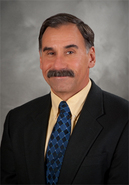IHA - Hypertension and high blood pressure can lead to other deadly conditions if not treated

Steven Yarows, MD, FACP, FASH
Blood pressure is recorded as two numbers — the first representing the pressure when the heart is beating (systolic), and the second pressure during the relaxation of the heart (diastolic). So why are these two numbers so important?
Blood pressure represents the pressure in the arteries that supply nutrients to the organs. Too much pressure in any system is harmful long-term. We measure blood pressure at rest to determine if a person has hypertension or if the hypertension is controlled. Individual readings (no matter how high) do not predict immediate risk of stroke and do not require emergency treatment; rather averages of multiple readings indicate blood pressure control.
But why is hypertension such a big concern? Hypertension is highly associated with vascular diseases such as diabetes, stroke, kidney failure, coronary heart disease and congestive heart failure. The best way to prevent a stroke is to control hypertension by controlling blood pressure. Hypertension treatment also decreases the risk of other vascular diseases and risk of heart attack.
Some things to consider:
- The treatment of hypertension has noticeably improved over the past several decades. The current treatments usually result in once-a-day drugs that have rare, minor, and reversible side-effects. These drugs have no side-effects for most people. Many of these drugs are generic and can cost as little as $10 for a three month supply. There are several classes of medications. The majority of patients need more than one class of drug to control their hypertension; however, there are many agents with two or three drugs in one pill.
- If you have hypertension, you also need to control your other risk factors for ‘hardening of the artery’ diseases such as heart attack, stroke and peripheral vascular disease. Areas to work on include quitting smoking, exercising more, controlling your cholesterol and limiting your salt intake. Remember, salt is found in many common foods such as luncheon meats, soups, catsup, ham and cheese.
- If you have hypertension, your physician will most likely recommend you purchase a home blood pressure monitor. They are easy to use and very accurate. I recommend taking your blood pressure in the morning and before dinner after about three to five minutes of sitting, and then record the readings. You should take your blood pressure twice daily for a month after your blood pressure medicine has been added or changed. Monthly readings are sufficient if your blood pressure is controlled. I suggest taking your blood pressure on the first day of each month. Don’t forget to bring in these readings for your health care provider.
Strokes are life-changing and debilitating. Don’t ignore controlling your hypertension as it is a truly silent killer that can be prevented by easy treatment.
To download a printable form so you can track your blood pressure on a graph, go to my IHA profile page and click on "Blood pressure home monitoring graph."
Steven Yarows, MD, FACP, FASH, is a board-certified internal medicine physician practicing at IHA Chelsea Family & Internal Medicine. Dr. Yarows is a certified specialist in clinical hypertension and also has special interest in cardiovascular medicine, diabetes, and blood pressure devices research. IHA Chelsea Family & Internal Medicine is located at 128 Van Buren St., Chelsea, MI 48118. Dr. Yarows can be reached at 734-475-8677. For more information, please visit www.ihacares.com.

